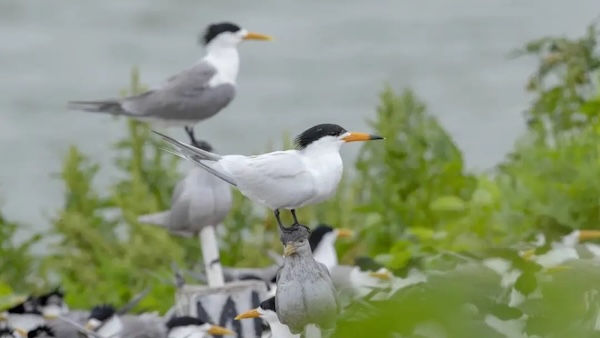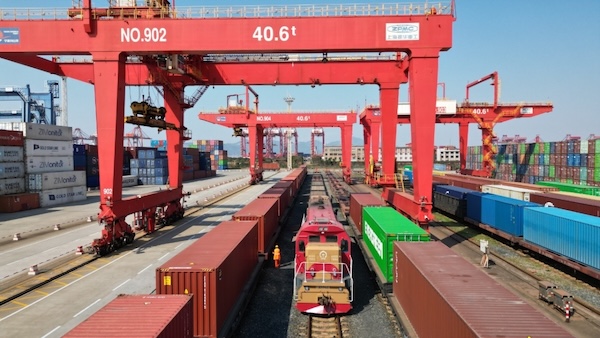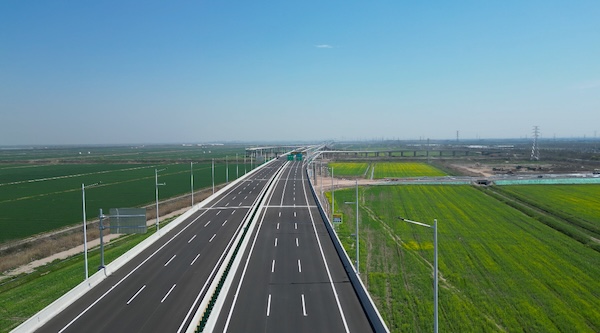Nation's first inter-provincial blue carbon account unveiled in Xiangshan

Ningbo in Zhejiang province and Xiamen in Fujian province unveil the nation's first inter-provincial co-built blue carbon credit account on March 11. [Photo/WeChat account: nbfb0574]
Transcending provincial boundaries, two coastal cities in China have joined forces to bolster the nationwide decarbonization initiative, which aims to reach peak carbon emissions by 2030 and achieve carbon neutrality by 2060.
On March 11, Ningbo in Zhejiang province and Xiamen in Fujian province unveiled the nation's first inter-provincial co-built blue carbon credit account, marking a significant stride towards establishing a closed-loop management system for developing, registering, trading, verifying, and applying blue carbon products across both regions.
During the launch event held in Ningbo's Xiangshan county, a company based in Xiangshan purchased 422.5 metric tons of blue carbon products, underscoring the immediate impact of this collaborative effort.
Leveraging their respective environmental assets, Ningbo and Xiamen have emerged as vanguards in China's pursuit of sustainable development. Ningbo's abundance of salt marshes, muddy tidal flats, and shellfish and algae, all effective carbon sinks, provides an ideal foundation for the development of a blue carbon economy. Notably, Ningbo conducted the nation's first auction of blue carbon credits last year.
Meanwhile, Xiamen has been at the forefront of harnessing mangrove forests as carbon sinks. The city established China's first agricultural carbon sink trading platform.
In a parallel development, the country's first comprehensive insurance for carbon accounts was launched in Xiangshan. Looking ahead, Ningbo aims to leverage its distinction as the country's first comprehensive innovative insurance demonstration zone to conduct pilot projects for related insurance products, offering crucial risk protection for the operation of blue carbon accounts.
Blue carbon refers to carbon absorbed from the atmosphere and stored in coastal and marine ecosystems. Scientific studies show that the ocean stores 50 times more carbon than the atmosphere and 20 times more than all land plants and soil combined. Mangroves, tidal marshes, and seagrasses are recognized as three major blue carbon sinks, as both their plants and the sediment below can sequester and store large quantities of carbon.
Based on the quantity of carbon they absorb and store, these ecosystems generate blue carbon credits that are sold to buyers who want to offset their carbon emissions.

 Ningbo seabird project seeks international volunteers
Ningbo seabird project seeks international volunteers  Jakub's journey: From shipyard to sea
Jakub's journey: From shipyard to sea  Badminton Asia COO applauds Ningbo
Badminton Asia COO applauds Ningbo 


